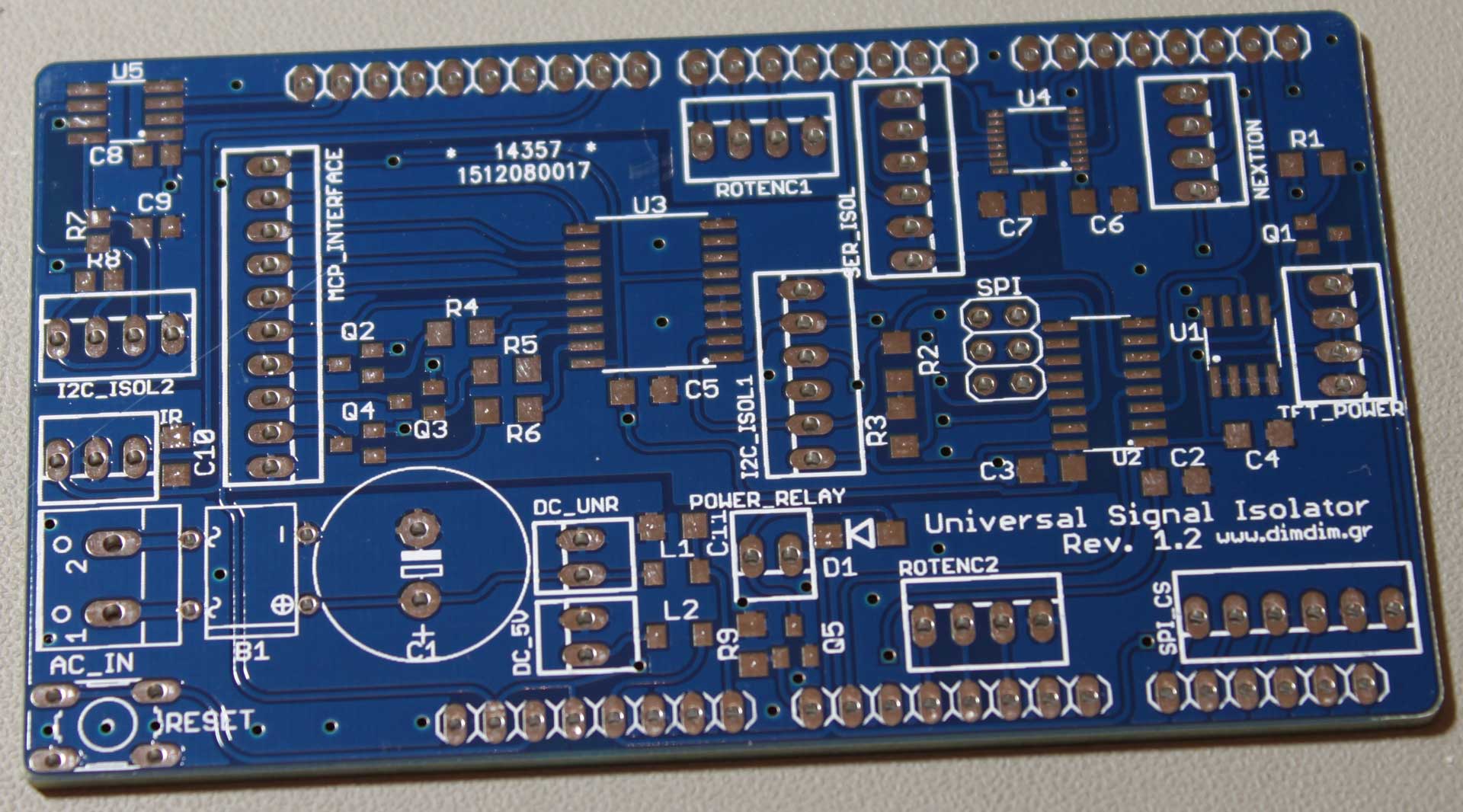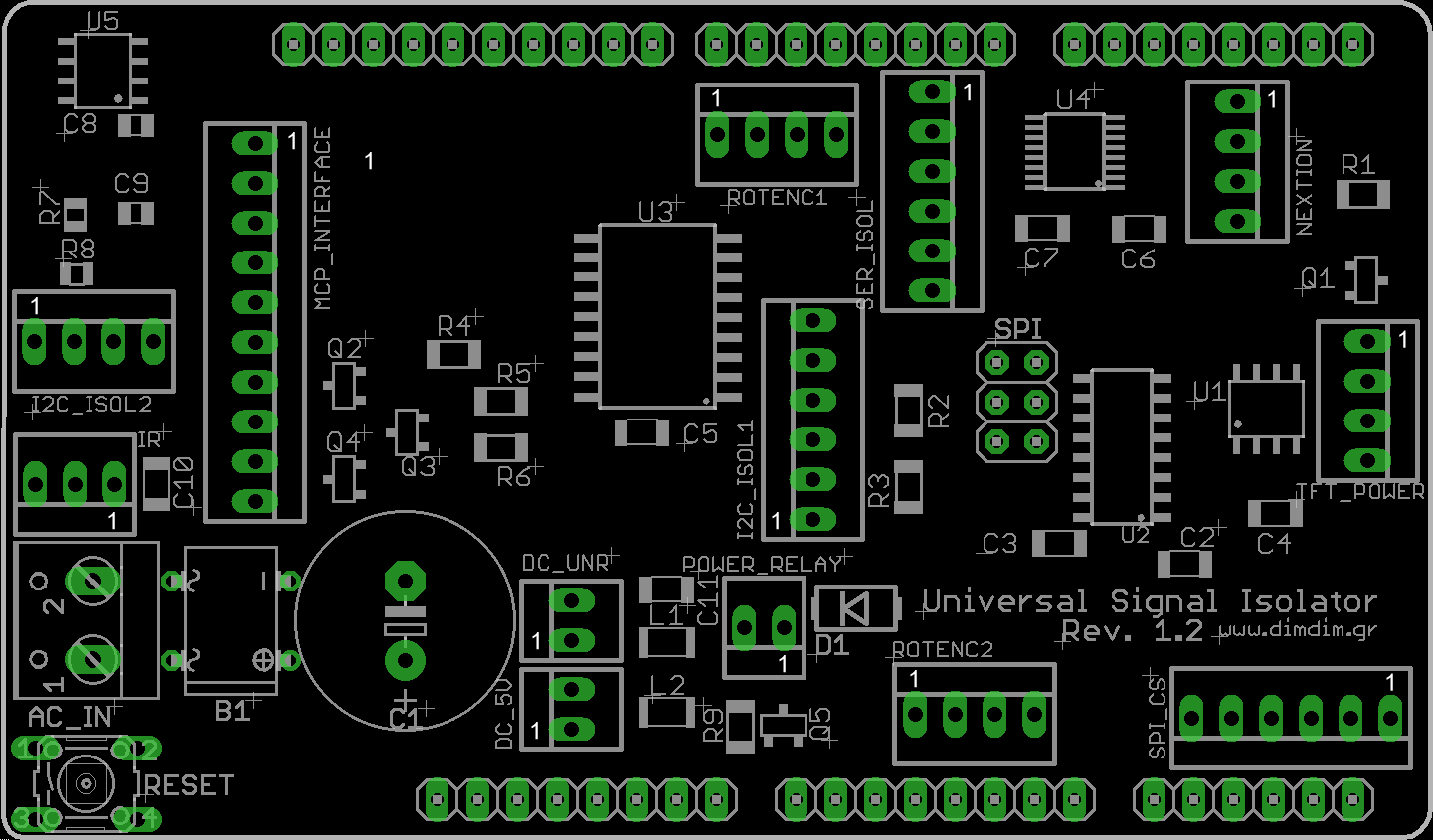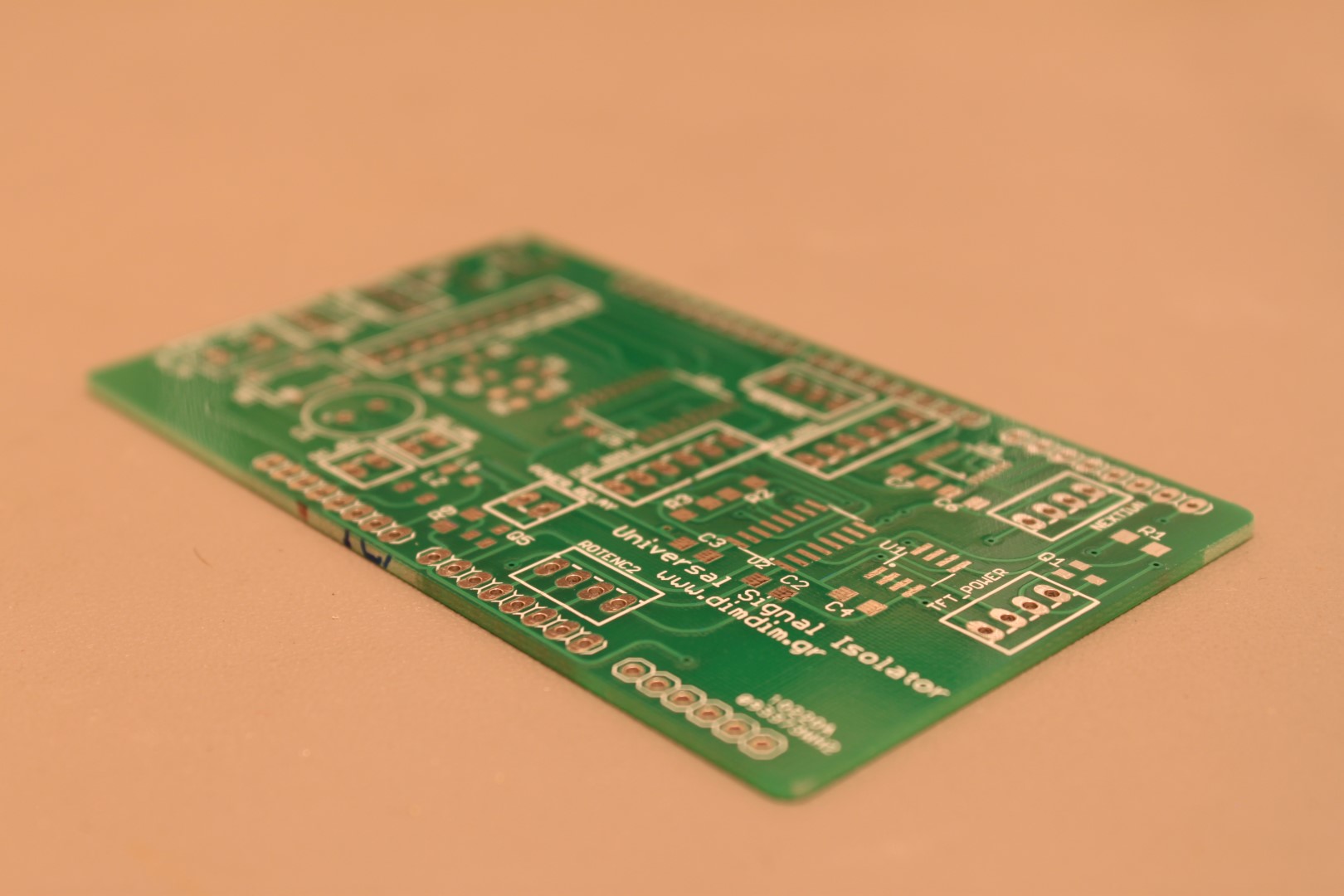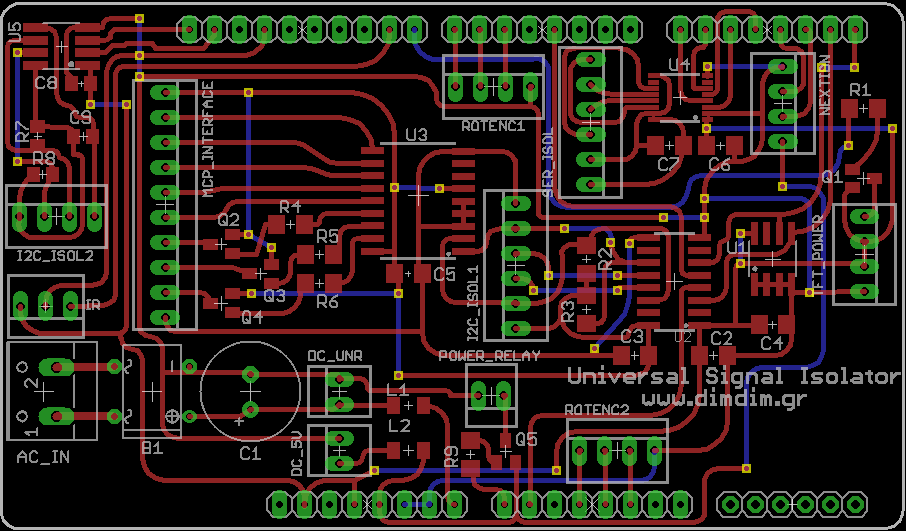Since there has been a lot of interest in my Isolator shield these past few months, I have been optimizing its design.
The result of this optimization is this PCB:

It’s called “the Rev. 1.2”.
Nothing major has changed. The pinouts are still the same, the major components are the same, the functionality is essentially the same.
The changes are as follows:
- New SPI header. It just passes through the SPI signals, nothing more. It does not connect to anything on the board.
- New SPI_CS header. Useful only if / when connecting SPI peripherals.
- Reset button. Because you never know..
- New circuitry for the POWER_RELAY header. It now uses a MOSFET and it includes a diode for the reverse current coming back from the relay’s coil.
- Decoupling cap for the IR receiver. Not absolutely necessary, but good to have.
- More decoupling for the DC_UNR input.
- Ground planes. Lower Arduino noise, at least in theory.
Here is the updated parts placement:

And this is the updated BoM:
[table “” not found /]Soon I will update the shield’s page with the new info.



